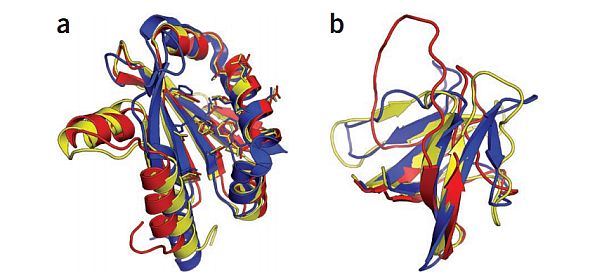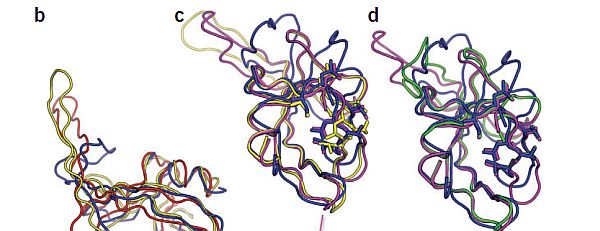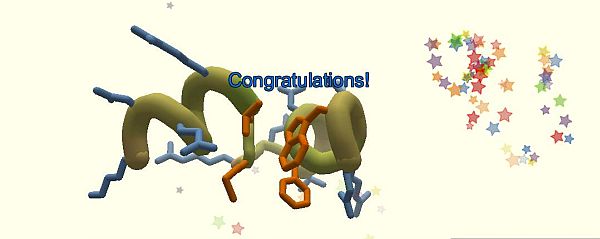
Perhaps you’re not familiar with the search for the molecular structure of a protein-cutting enzyme from an AIDS-like virus found in rhesus monkeys. But groups of scientists have been trying to fathom this mystery for years. And it’s just been cracked by PC gamers.
Why is this exciting? Because it’s believed that this information could be crucial to better figuring out how the AIDS virus works, and how it can be tackled. The findings, discovered via the gameFoldit, are published online ahead of the next issue of Nature: Structural & Molecular Biology, with the authorship listing both scientists and gamers.
The results being discovered by this game are useful in many significant areas of research, the big three being AIDS, cancer and Alzheimer’s. All three diseases are related to proteins, the subject of Foldit’s puzzles, and the more that is known about how they behave, the more can be done to tackle the diseases they’re related to. And their behaviour is very much determined by their structure.
It’s the second paper Foldit has seen published in Nature, which is a remarkable achievement. The game involves folding proteins, attempting to manipulate three-dimensional models of proteins into the most energy-efficient structure possible. As such, it’s competitive, with players attempting to out-score others, and in the process getting closer to the unknown structure of the protein sought.

According to the paper, for years scientists have failed to uncover the crystal structure of M-PMV retroviral protease. However, Foldit players struck upon the solution. As the paper explains,
“Foldit players leverage human three-dimensional problem-solving skills to interact with protein structures using direct manipulation tools and algorithms from the Rosetta structure prediction methodology. Players collaborate with teammates while competing with other players to obtain the highest-scoring (lowest-energy) models. In proof-of-concept tests, Foldit players—most of whom have little or no background in biochemistry—were able to solve protein structure refinement problems in which backbone rearrangement was necessary to correctly bury hydrophobic residues. Here we report Foldit player successes in real-world modeling problems with more complex deviations from native structures, leading to the solution of a long-standing protein crystal structure problem.”
Got that?
Explained in the Sydney Morning Herald’s article, when looking down a microscope all you’ll see is a 2D splodge of the molecule you’re trying to understand, but to do anything useful you need to know about it in 3D. Which is where the puzzling comes in. It seems that computer models are not as capable as humans when working within spacial reasoning, hence the advantage of gamers approaching these challenges. Because, well according to the paper,
“Foldit players — most of whom have little or no background in biochemistry — were able to solve protein structure refinement problems in which backbone rearrangement was necessary to
correctly bury hydrophobic residue.”
Thankfully MSNBC explains it all rather well. According to the site, there are millions of ways for an enzyme’s atoms’ bonds to twist, and the secret to getting it right is finding the lowest-energy configuration for such a structure. Because that’s the one that Horace picked when he designed the universe. So 236,000 players working together and against each other for the last three years have proven rather useful. And it took them only 10 days to unravel (or indeed re-ravel) a mystery that had stumped the experts for over a decade.

And this isn’t a one-off. Foldit can continuously be used in this way to solve the structures of mysterious enzymes, and being equipped with such knowledge is extremely powerful. Knowing the correct arrangement of a molecule’s spaghetti is crucial to understanding its behaviour, how it bonds, and then tackling any shenanigans it may get up to. This time it could be a significant step toward finding better means of treating AIDS. Next time, something else.
As the paper concludes, this is a unique approach, this recent result demonstrating great potential for crowd-sourced gaming as a means for research,
“The critical role of Foldit players in the solution of the M-PMV PR structure shows the power of online games to channel human intuition and three-dimensional pattern-matching skills to solve challenging scientific problems. Although much attention has recently been given to the potential of crowdsourcing and game playing, this is the first instance that we are aware of in which online gamers solved a longstanding scientific problem. These results indicate the potential for integrating video games into the real-world scientific process: the ingenuity of game players is a formidable force that, if properly directed, can be used to solve a wide range of scientific problems.”
If you want to join in, you can get Foldit from here. It begins with a tutorial that explains the concept in great detail, and then you’re away into attempting to find the most energy efficient structures, either alone or in teams, competing against others around the world. And saving lives.
Thank you to everyone who tipped us about this.

No comments:
Post a Comment